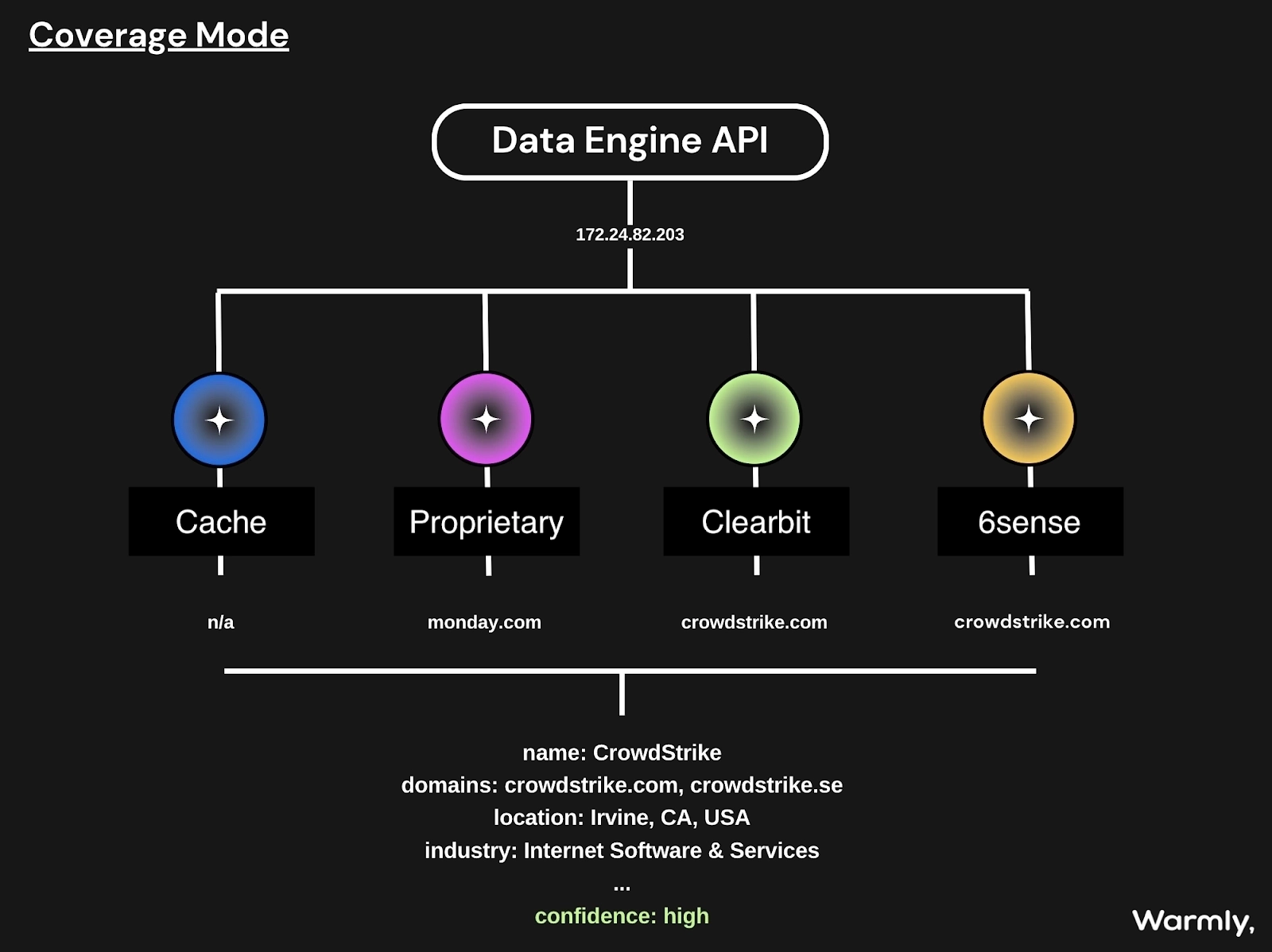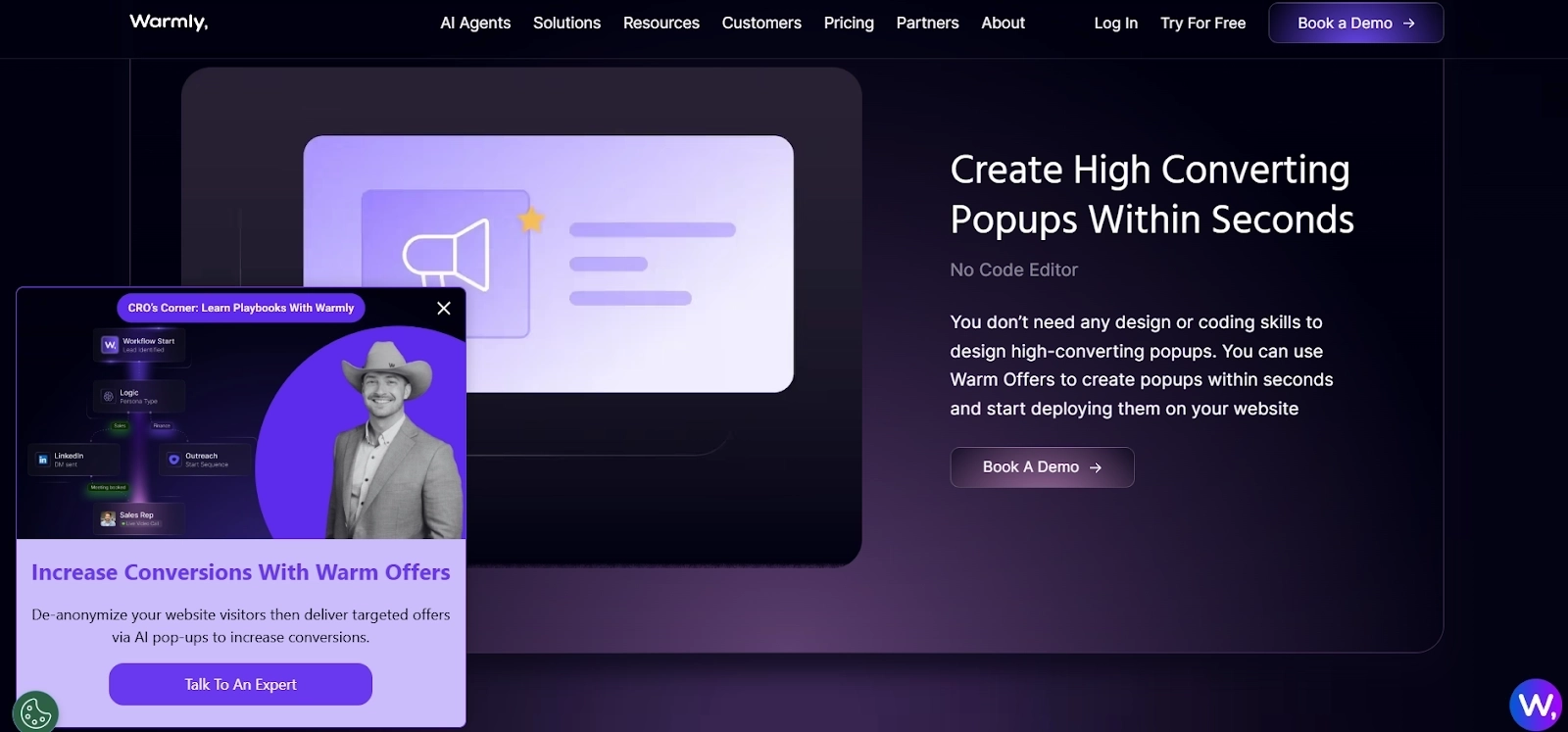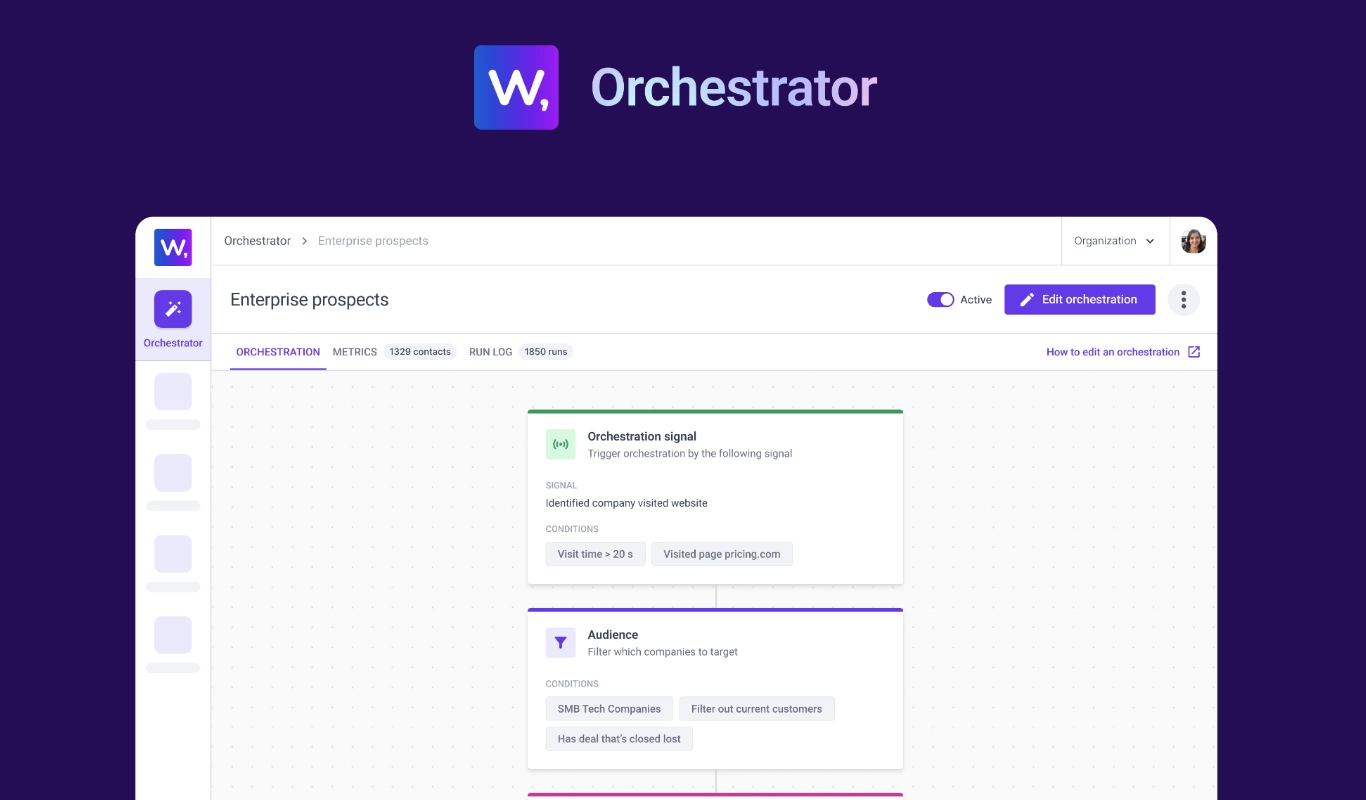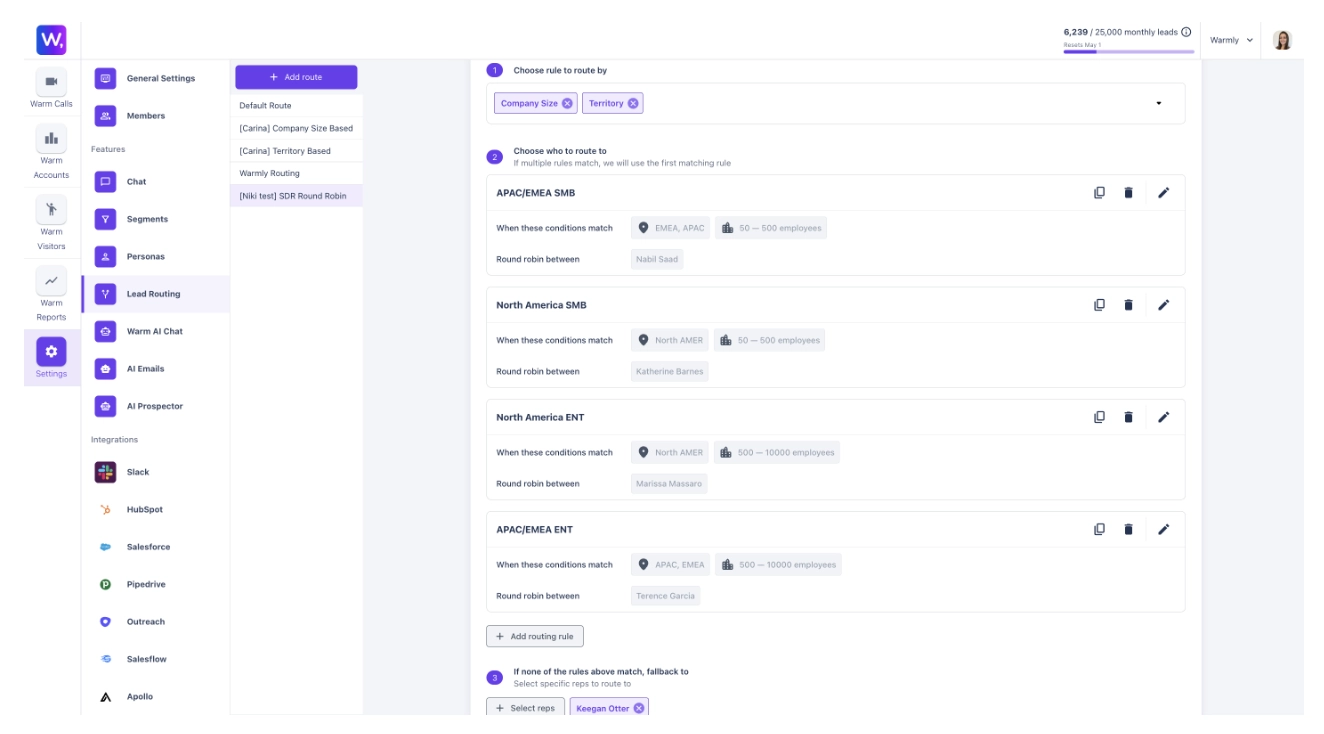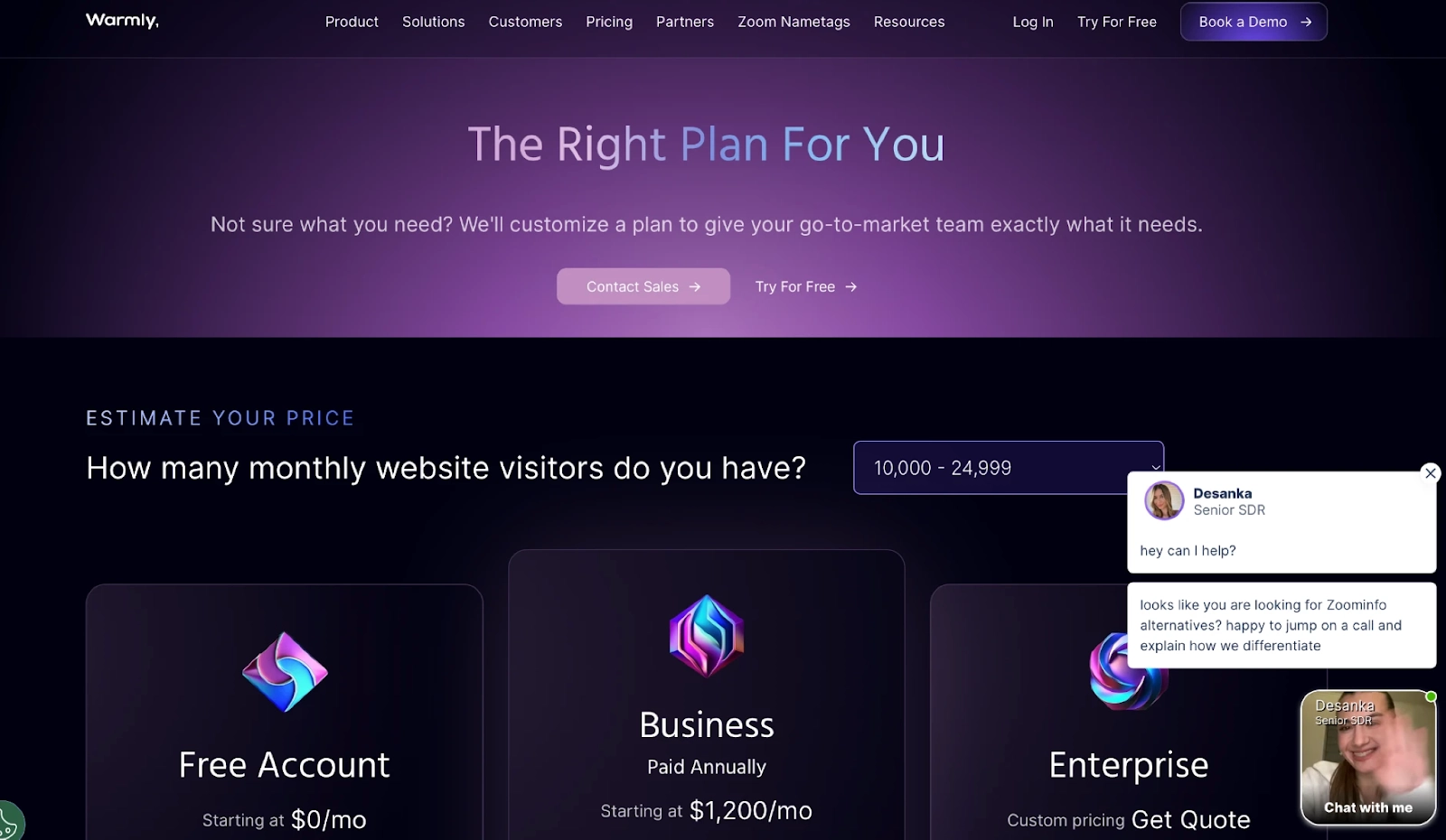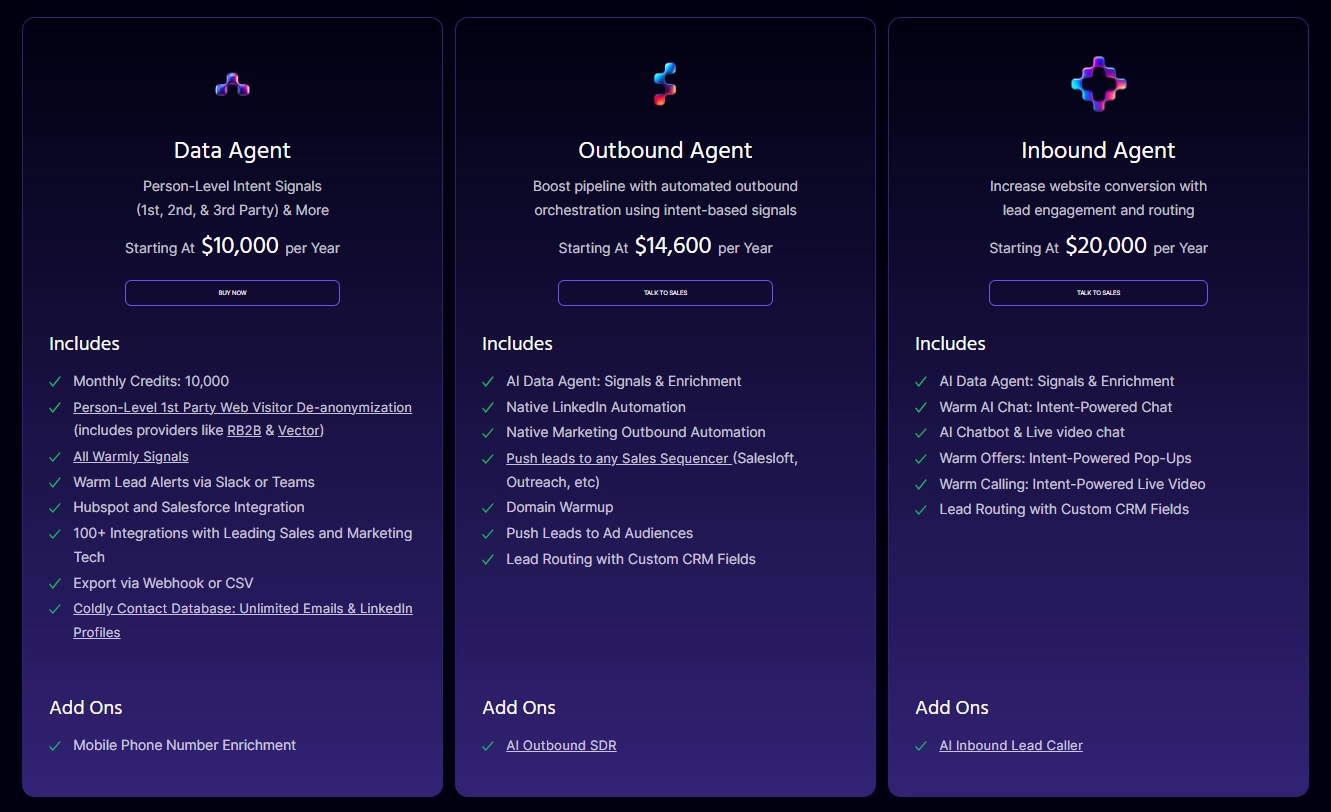
15 Lead Generation Metrics & KPIs You Should Track in 2024
In the ever-evolving lead generation landscape, staying ahead of the curve requires more than just intuition and guesswork.
The key to unlocking your sales and marketing efforts' full potential lies in tracking the right lead generation metrics and KPIs, as they can point you in the right direction, helping you identify and convert high-value leads.
But with so many data points to consider, how do you determine which lead generation metrics truly matter?
We’re here to help! In this detailed guide, we’ll discuss the 15 essential lead generation metrics and KPIs every marketer—beginner and pro alike—should monitor for optimal results.
Let’s dive in!
TL;DR
- Lead generation metrics and KPIs are measurable values vital for assessing the efficiency of your lead generation strategies.
- Choosing the right metrics for your business depends on business objectives, lead generation channels, your business stage, and type.
Top lead generation metrics to track include:
- Number of generated leads
- Lead conversion rate
- Website traffic
- Cost per lead
- Lead quality score
- Customer acquisition cost
- Marketing Qualified Leads
- Sales Qualified Leads
- Lead source attribution
- Lead velocity rate
- Time to conversion
- Customer lifetime value
- Churn rate
- Engagement rate
- MRR
💡 Warmly can help boost your website lead generation and conversion rates by identifying website visitors, detecting the hottest leads among them, and engaging them while they’re still hot.
What is a lead generation KPI?
Before we begin, here is a quick reminder of what lead generation metrics and KPIs actually are.
Lead generation KPIs (Key Performance Indicators) are measurable values that help you evaluate the effectiveness of your lead generation efforts.
As such, they are crucial for:
- Tracking progress.
- Determining whether your strategies are achieving their intended goals.
- Helping you figure out which segments require tweaking and improvements.

How do you choose the right lead generation metrics?

Not all lead generation metrics are equally useful for different businesses, goals, and needs.
Therefore, you should consider several factors before deciding on which lead generation metrics to track:
- Business objectives - This one is a no-brainer. Focus on metrics that are most relevant to your specific goals and requirements. For example, if your goal is to increase sales, focus on metrics related to lead conversion rates and lead-to-customer ratios.
- Preferred lead generation channels—Different lead generation channels (e.g., social media, email marketing, content marketing) may require specific metrics. For instance, tracking click-through rates (CTR) is relevant for email campaigns, engagement metrics for social media, etc.
- Available data - Choose metrics you can track accurately and continuously based on the data you can access. If collecting relevant data is impossible or too difficult, switch to those you can track more easily or use tools that can help you find that data. For example, you can’t accurately track website engagement if you can’t tell who your website visitors are and how they interact with your content.
Another important factor to consider before choosing which KPIs to monitor is the type, size, and stage of your business:
- Startups and early-stage businesses can keep things simple and focus on growth metrics (number of generated leads, conversion rates, etc.) and lead and customer acquisition costs.
- Growing companies can start to introduce granularity by focusing on metrics that indicate how to ensure sustainable scaling, such as customer lifetime value, performance of different lead generation channels, etc.
- Established enterprises can use advanced metrics, such as multi-channel attribution, customer retention rate, and more, to expand into other markets, retain more customers, cross-sell and upsell, and more.
- B2B companies often place more focus on account-based metrics (e.g., success rates of account-based campaigns, number of targeted and converted accounts, etc.), and lead quality and conversion rates, as these ensure they’re targeting the right accounts and appropriate stakeholders within them.
- B2C companies should prioritize metrics that reflect consumer behavior and engagement, such as social media engagement metrics, multichannel buyer sentiment, customer retention rate, and more.
Finally, if you’re wondering when is the best time to start tracking metrics and KPIs, the answer is - as soon as possible. That way, you’ll avoid missing out on actionable insights.
Early tracking allows you to measure the effectiveness of your strategies and make informed adjustments from the get-go, so make sure to track metrics:
- At the start of every new lead generation campaign.
- When implementing changes to existing strategies, in order to determine their impact.
What are the top lead generation metrics to track?
Regardless of your industry and stage of business, there are some lead generation metrics and KPIs that everyone should track.
Let’s break down each!

1. Number of generated leads
The number of generated leads is the total count of leads collected over a specified period.
Knowing how many leads you generated over a certain period helps you assess the efficiency of your lead generation strategies and provides insights into which parts require adjustment or improvement.
Tracking the number of generated leads involves 2 key steps:
➡️ Use lead capture tools - Web forms, landing pages, website traffic trackers, etc., can all help capture relevant lead information.
➡️ Focus on regular reporting and analytics - Create regular reports to review the number of leads generated over specific periods (e.g., daily, weekly, monthly). Analyze trends and compare lead generation volumes across different campaigns and channels.
2. Lead conversion rate
Lead conversion rate measures the percentage of leads that progress to the next stage in the sales funnel, such as becoming an MQL or SQL or eventually converting into a customer.
This metric is essential for assessing the effectiveness of your lead nurturing processes and overall lead generation strategies.
It’s directly related to the number of generated leads, as the whole point of lead generation is to find leads who are most likely to convert.
If you generate thousands of leads but manage to convert just a dozen, this is usually a sign that something is seriously off with your marketing strategy.
The formula for calculating your lead conversion rate is:
Lead Conversion Rate = (Total Number of Leads/Number of Leads Converted) × 100

For example, if you start with 1,000 leads and 200 of them are converted into paying customers, the lead conversion rate would be:
(200/1000) × 100 = 20%
When it comes to tracking lead conversion rates, you should:
- Define conversions - Clearly define what a lead conversion in your context entails. This could be moving from a cold lead to an MQL or SQL or becoming a paying customer. Ensure that your marketing and sales teams understand these stages well for accurate measurement.
- Use conversion tracking systems - Leverage CRMs, automation tools, website visitor identification tools, etc., to accurately track lead progression through the sales funnel and capture their transition from one stage to the next.
3. Website traffic
Website traffic measures the number of visitors to your website over a specific period.

As such, it’s crucial to understand how well your website attracts visitors and how many match your ICP.
There are several segments of these metrics to keep an eye on:
- Total number of website visitors over a period of time.
- Unique visitors, i.e., specific companies and individuals that visit your website, especially if they’re returning visitors.
- Page views, i.e., the pages your visitors land on most frequently or spend the most time on.
To accurately track website traffic, you should:
➡️ Use a website traffic tracking tool - These solutions can help you identify website visitors, so you’ll know not only how much traffic you’re generating but also who your unique visitors are.
➡️ Analyze visitor behavior - Use solutions that can uncover insights into visitors’ buyer intent by monitoring how they interact with your website. If your solution of choice can reveal more details of their digital buyer journey (e.g., how they interact with competitors’ websites and ads or topics they researched on the web), all the better.
➡️ Track where your traffic is coming from - This includes sources like organic search, paid advertising, social media, referral sites, and direct traffic, helping you understand which channels are most effective in driving visitors to your site. For instance, you can add a snippet of tracking code to your cold emails to know which visitors came through specific outbound campaigns.
Pro tip: You can achieve all this with a single tool - Warmly. Our solution has options for identifying website visitors, revealing intent, and even tracking leads that came through email campaigns. Try it out here.
4. Cost per lead (CPL)
Cost per lead (CPL) is the average cost of acquiring a single lead.
By understanding CPL, you can determine whether your marketing investments are yielding a good return and make informed decisions about where to allocate your resources.
The formula to calculate CPL is:
CPL = Total Cost of Lead Generation/Number of Leads Generated

For example, if you spend $5,000 on a lead generation campaign and generate 500 leads, the CPL would be:
5000/500 = $10
This means that, on average, you are spending $10 to acquire each new lead.
Of course, since businesses differ in size, budgets, and objectives, there’s no definition of the optimal CPL value, as it depends on the individual business. Only you can tell what’s economical for you and what isn’t.
To track these metrics, you need to:
➡️ Keep tabs on your lead generation expenses - This includes all the costs related to lead generation efforts, such as advertising (e.g., PPC campaigns, social media ads), content creation (e.g., blog posts, ebooks), lead capture tools, and other relevant costs.
➡️ Monitor the total number of leads generated.
Pro tip: Although a lower CPL is ideal, it’s also important to ensure that the leads are high-quality and have a good chance of converting into customers. Balancing the costs with lead quality helps in maximizing overall ROI.
5. Lead quality score
Lead quality score helps businesses determine how likely a lead is to convert into a paying customer based on certain criteria and characteristics, allowing for more effective prioritization and resource allocation.
A higher lead quality score indicates that the lead is more likely to engage and convert, while a lower score suggests that additional nurturing or qualification may be needed.
Calculating this metric can be more complex than other KPIs because your definition of a high-quality lead might differ from the next business’s.

The scoring process involves several steps, including:
- Calculating your lead conversion rate.
- Defining the behaviors and attributes that indicate buyer intent and good ICP fit in your specific case.
- Determining the impact each action and behavior has on conversion (e.g., if 2 out of 3 leads who frequently returned to your pricing page converted in the end, it’s a good sign that this is high-intent behavior).
- Creating your scoring and qualification system based on the most relevant buying signals you defined
That’s why doing it manually isn’t the best of options.
Instead, you could use a tool to automate lead scoring and qualification based on the criteria and data attributes you specified as relevant.
Pro tip: You can achieve this with Warmly, as the platform enables you to put lead qualification and routing on autopilot.
6. Customer acquisition cost (CAC)
This metric measures the average cost of acquiring a new customer.
Monitoring CAC helps you ensure that your customer acquisition activities are sustainable and profitable and that they will not exceed your marketing budget.
The formula to calculate CAC is:
CAC = Total Cost of Acquisition/Number of New Customers Acquired
Where:
- Total Cost of Acquisition includes all expenses related to acquiring new customers, such as marketing and sales costs.
- Number of New Customers Acquired is the total number of new customers gained during a specific period.

For example, if you spend $50,000 on marketing and sales efforts in a quarter and acquire 500 new customers, your CAC would be:
50000/500 = $100
This means that, on average, you’re spending $100 to acquire each new customer.
To track it, you need to:
➡️ Monitor overall acquisition expenses, including all relevant marketing and sales expenses.
➡️ Record new customers acquired over a specific period.
7. Marketing Qualified Leads (MQLs)
MQLs are leads who are considered more likely to become customers based on their engagement with your marketing team and activities.
These leads have demonstrated a higher level of interest and engagement compared to other leads, making them more promising for further nurturing by the sales team.
There’s no direct formula for calculating MQLs.
Instead, the process involves defining criteria that indicate a lead’s potential to become a customer (e.g., engagement metrics, demographics, behavioral signals, etc.) and scoring them based on those criteria.
The best way to do this is to use marketing automation and lead intelligence tools that can identify, score, and qualify leads on your behalf.
8. Sales Qualified Leads (SQLs)
SQLs are leads who have been evaluated by the sales team and considered ready for direct sales engagement.
These leads have passed through initial marketing evaluations and shown a significant level of interest or intent, indicating they are more likely to convert than MQLs.
Being able to identify them is crucial for your lead generation and conversion success, as they’re the ones who are most likely to convert right now.
Similarly to MQLs, SQLs are typically identified based on specific criteria or behaviors that align closely with your sales team’s requirements.
As a result, the process of tracking them is the same:
➡️ Define the criteria that set a lead out as qualified for sales (high-intent behavior, e.g., booking a demo, contacting sales for a custom quote, returning to your website, and visiting high-intent pages, etc.).
➡️ Score leads based on that criteria.
Again, the fastest, most efficient, and most accurate way of tracking and identifying SQLs is to use designated tools for lead enrichment and qualification.
9. Lead source attribution
Lead source attribution tracks and identifies the origin of your leads, such as which marketing channels or campaigns contributed to generating them.
Accurate attribution helps you understand which sources provide the best quality leads and contributes to more informed decision-making in your marketing strategy.
To track it, make sure you monitor all your lead generation channels (e.g., website, email campaigns, PPC campaigns, etc.) and capture lead data to determine which lead came from which source.
10. Lead velocity rate (LVR)
This metric tracks the speed at which your lead pipeline is expanding, providing insights into the effectiveness of your lead generation efforts and the overall health of your sales funnel.
The formula to calculate it is:
LVR = (Number of Leads This Month − Number of Leads Last Month) / Number of Leads Last Month × 100

For example, if you had 500 leads last month and 600 leads this month, the LVR would be:
(600 − 500) / 500 × 100 = 20%
This indicates a 20% growth in your lead pipeline over the period.
To track it, you should:
➡️ Regularly track the number of generated leads, ideally every month or even week.
➡️ Calculate LVR periodically using the formula above to understand the lead growth rate for a specific time interval. This helps detect anomalies and track changes in lead volume over time.
Pro tip: Analyze how LVRs change over time to understand your lead pipeline’s growth dynamics. This can help you understand and predict growth trends.
11. Time to conversion
Simply put, this is the average time it takes a lead to progress from initial contact to becoming a customer.
Tracking time to conversion is crucial for assessing the speed of your sales cycle, identifying potential bottlenecks, and making data-driven decisions to enhance your lead generation strategies and overall conversion rates.
To calculate it, apply the following formula:
Time to Conversion = Sum of Time Taken for All Conversions/ Number of Conversions

For example, if you have 10 leads that converted over a period of 30 days, and the total time taken for all conversions is 300 days, the average time to conversion would be:
300/10 = 30 days
To track it, you’ll have to:
- Determine the individual time to conversion for each lead (you can do this by applying timestamps in your CRM that will help you pinpoint the actual time it took you from initial contact to conversion).
- Add all those individual times to conversion together to get a sum of time taken for all conversions.
- Keep tabs on the number of conversions over that specific period.
12. Customer lifetime value (CLV)
This metric shows the total revenue a business can expect from a single customer over the entire duration of their relationship.
As such, CLV helps you understand the long-term value of acquiring and retaining customers, allowing you to optimize marketing spend and fully monetize your customer base.
The formula to calculate CLV is:
CLV = Average Purchase Value × Average Purchase Frequency × Customer Lifespan
Where:
- Average Purchase Value is the average amount of revenue generated per purchase.
- Average Purchase Frequency is the average number of purchases made by a customer within a specific period.
- Customer Lifespan is the average duration a customer remains active with your business.

For example, if a customer makes an average purchase of $100, purchases 4 times a year, and stays with your business for 3 years, the CLV would be:
100 × 4 × 3 = $ 1,200
To track CLV, take the following steps:
- Gather data on average buying values and frequencies from your sales and CRM systems.
- Analyze historical data to calculate the average customer lifespan. This can be done by tracking the time from a customer’s first purchase to their last purchase or when they become inactive.
13. Churn rate
Churn rate is one of sales and marketing teams' least favorite metrics, as it shows the percentage of customers who stopped engaging or making purchases over a specified period.
This KPI is crucial for assessing customer retention, understanding the reasons behind customer loss, and evaluating the overall health of your business.
The formula to calculate churn rate is:
Churn Rate = Number of Customers Lost During a Period/Number of Customers at the Start of the Period × 100

For example, if you had 1,000 customers at the start of the month and lost 50 customers by the end of the month, the churn rate would be:
50/1000 × 100 = 5%
This indicates that 5% of your customers churned during the month.
You can track this metric by:
- Maintaining accurate records of customer numbers at the beginning and end of the measurement period.
- Tracking the number of customers who have canceled or stopped using your product or service. Ensure that this information is updated regularly to reflect recent changes.
14. Engagement rate
Engagement rate measures how actively leads interact with your marketing content, such as email open rates, click-through rates, and social media interactions.
It is an important indicator of how well your content resonates with your audience and how effectively it drives actions such as likes, shares, comments, and clicks.
Although the formula to calculate engagement rate varies depending on the type of content and the platform, there’s a common formula that can be applied to most cases:

Engagement Rate = Total Engagements/Total Impressions or Reach × 100
Where:
- Total Engagements includes actions such as likes, shares, comments, clicks, and other interactions.
- Total Impressions or Reach represents the number of times the content was displayed or seen.
For example, if a social media post received 200 likes, 50 comments, and 30 shares (totaling 280 engagements) and had 5,000 impressions, the engagement rate would be:
280/5000 × 100 = 5.6%
This indicates that 5.6% of the people who saw the post actually engaged with it.
To track it, you have to:
- Define engagement actions, i.e., which types of interactions are considered engagements for your content. This can include likes, shares, comments, replies, clicks, and other relevant actions based on the platform and content type.
- Collect engagement data by using analytics tools provided by social media platforms, email marketing systems, content management systems, or a third-party tracking and analytics platform.
15. Monthly Recurring Revenue (MRR)
MRR measures the total revenue generated from your subscription-based business models on a monthly basis.
MRR provides a clear view of the stability and growth of your revenue stream by focusing on recurring income rather than one-time sales.
As such, it’s essential for SaaS companies as it helps forecast revenue and assess business performance.
To calculate it, use the following formula:
MRR = Number of Active Subscribers × Average Revenue Per User

Where:
- Number of Active Subscribers is the total count of customers with active subscriptions.
- Average Revenue Per User is the average revenue generated per subscriber per month.
For example, if you have 200 active subscribers, each generating an average of $50 per month, the MRR would be:
200 × 50 = $10,000
To track MRR, you first need to:
- Track active subscribers.
- Calculate average revenue per user by dividing total monthly revenue by the number of active subscribers. This helps you understand each subscriber's revenue contribution.
Common mistakes to avoid when tracking lead generation metrics
Tracking lead generation metrics is essential for optimizing your marketing and sales strategies, but it’s easy to fall into certain traps.
Avoiding these common mistakes can help ensure that your data is accurate and actionable:
- Neglecting data quality - Relying on inaccurate or incomplete data can lead to misleading insights and poor decision-making. To avoid this, invest in good data enrichment tools and regularly audit and clean your data to ensure accuracy.
- Ignoring context - Evaluating metrics without considering the broader picture can lead to misinterpretation. Always analyze metrics together with other relevant data, such as market conditions, campaign goals, and customer feedback.
- Focusing on vanity metrics - Prioritizing metrics like the total number of leads generated without considering lead quality or conversion rates or focusing on social media engagement alone will get you nowhere. Balance vanity metrics with meaningful lead generation KPIs that reflect lead quality, buying intent, and conversion rates to gain a clearer picture of your lead generation effectiveness.
- Failing to set clear goals - Tracking metrics without having specific objectives or benchmarks can lead to a lack of direction and actionable insights. Establish clear, measurable goals for your lead generation efforts, use metrics to track progress towards these goals, and adjust strategies as needed.
- Inconsistent tracking methods - Using different tracking methods or tools inconsistently across campaigns or periods. Standardize your tracking methods and tools to ensure consistency and comparability of data, which will help you make accurate comparisons and analyses.
- Not reviewing and adapting - Failing to regularly review your analytics reports and the insights metrics and KPIs provide, results in a very limited picture of your overall business health. Make sure to continuously review your metrics, assess performance, and adapt your strategies based on these data-driven insights.
Start converting more leads with Warmly
Handling lead generation manually is no easy task in today’s competitive market.
Besides, some lead generation metrics vital for success can’t be tracked without help from tools designed to monitor specific lead generation channels and capture relevant data - such as Warmly.
Warmly is a revenue orchestration platform that lets you harness your website’s full conversion potential by:
- Tracking and identifying website visitors - both companies and individual stakeholders.
- Enabling email campaign attribution by letting you track visitors who come through specific campaigns.
- Revealing B2B and intent data on each identified lead, enabling you to score and qualify them.
- Providing automated and human-handled options for engaging leads on your website while they’re still hot.

Sign up for Warmly’s free forever plan and discover how it can help you generate and convert more leads today.
Or book a live demo to see it in action first.














































































































































